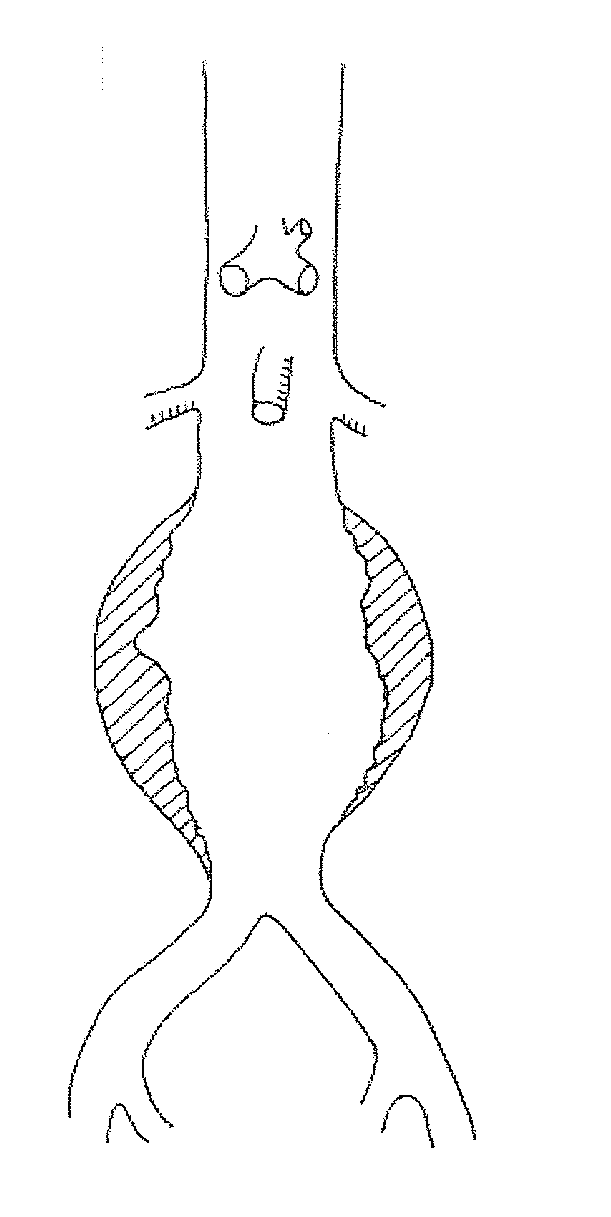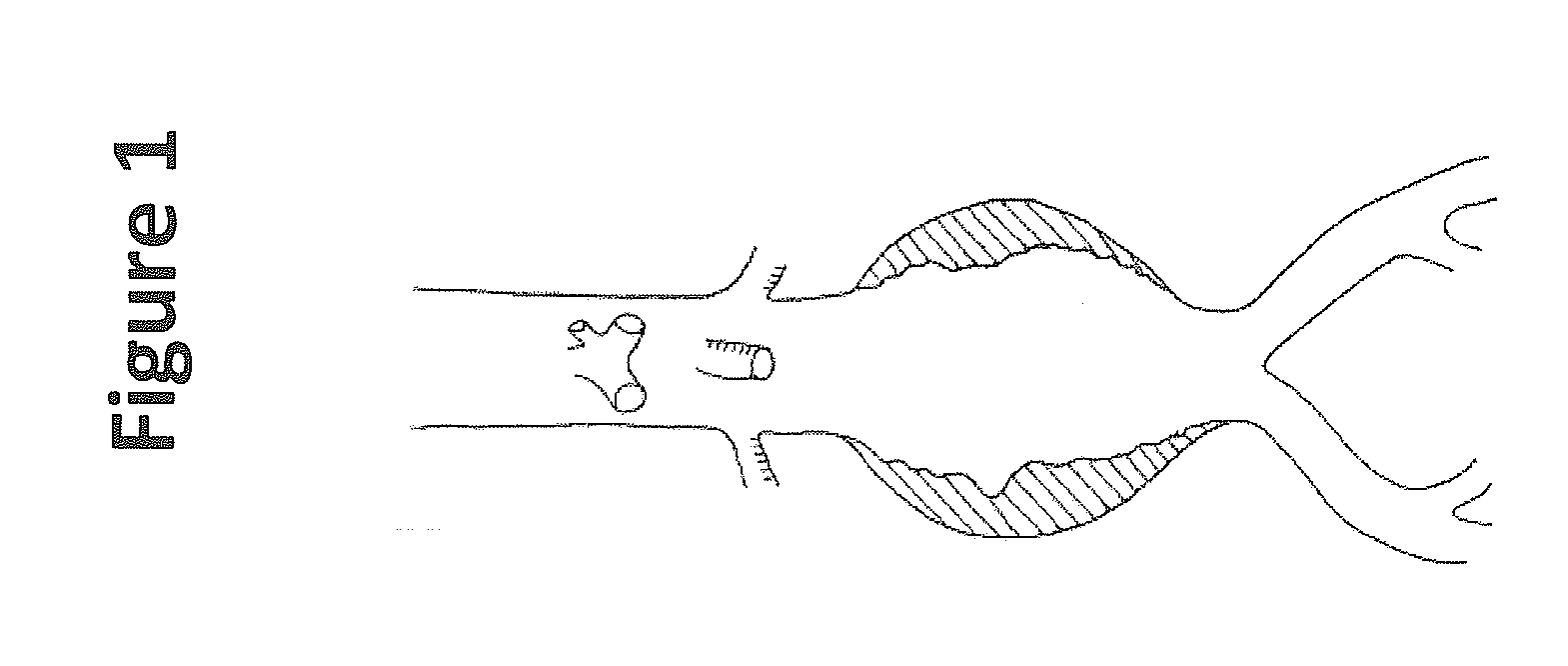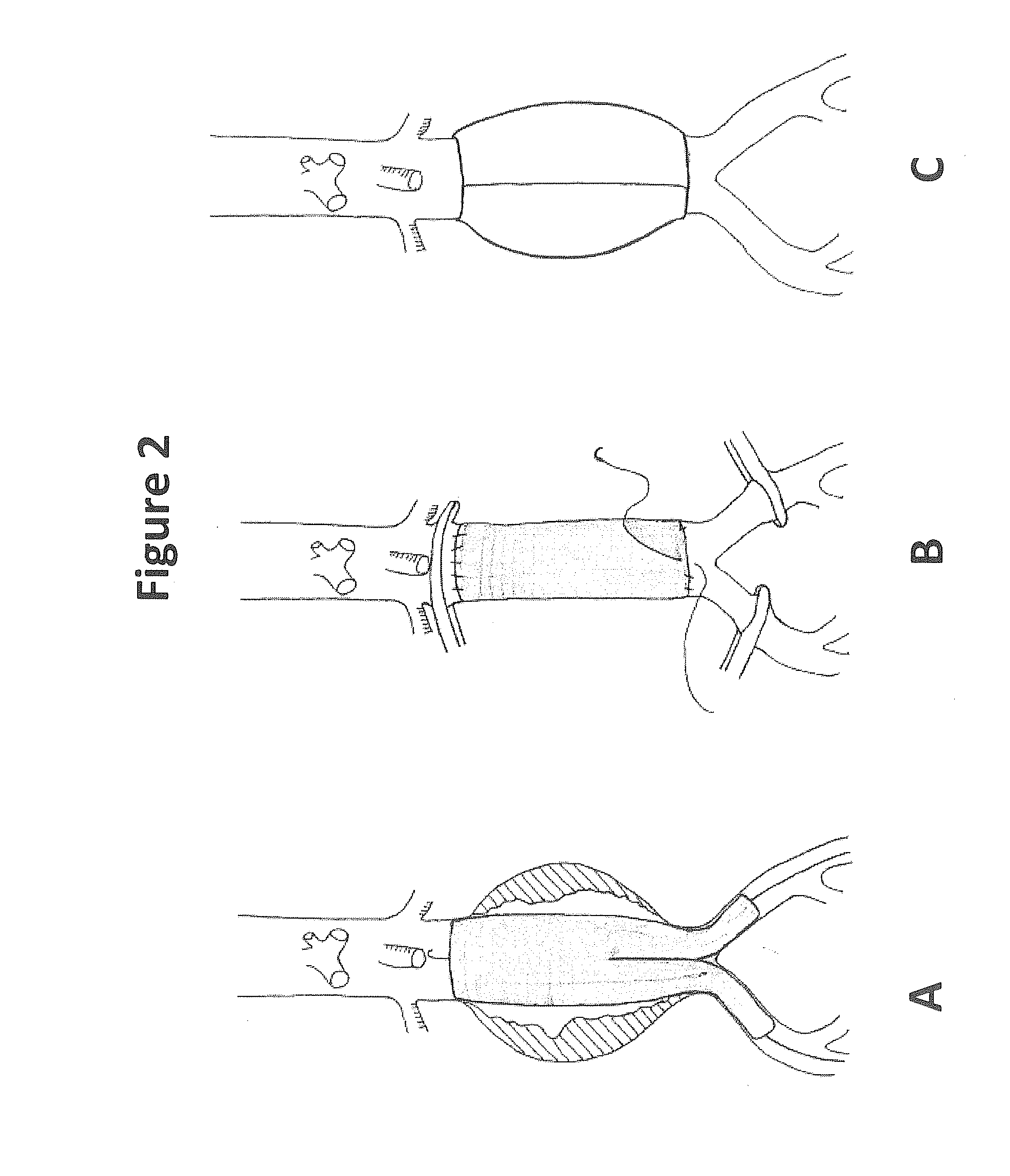Treatment of aneurysm with application of connective tissue stabilization agent in combination with a delivery vehicle
a technology of connective tissue stabilization and aneurysm, which is applied in the direction of drug composition, cardiovascular disorder, aerosol delivery, etc., can solve the problems of high invasiveness of open surgery for full-size graft insertion, unfavorable patient safety, and high risk of endoleakage and graft displacemen
- Summary
- Abstract
- Description
- Claims
- Application Information
AI Technical Summary
Problems solved by technology
Method used
Image
Examples
example 1
Tannins Bind to Pure Aortic Elastin
[0084]In order to determine kinetics of tannin binding to elastin, pure elastin strips obtained from porcine aorta were incubated with tannic acid (TA) for up to 24 hours. The concentration of TA in solution was assayed with the Folin-Denis method. The diagram at the top of FIG. 6 shows TA binding values normalized to dry weight of pure elastin strips. The kinetics shows a rapid uptake of TA, clearly indicating tannin binding to elastin. All data points between 0-6 hrs are statistically different with p<0.05. The bottom diagram of FIG. 6 is a representative schematic diagram of interactions between TA and elastin. The hydrophobic domains (2, black segments) are areas in the elastin molecule that are susceptible to elastase cleavage. TA and PGG molecules (4, round structures), with an affinity for these hydrophobic areas, likely bind to these regions within elastin molecules, and establish multiple hydrogen bonds (5, dashed lines) between their hydr...
example 2
Tannins Protect Pure Aortic Elastin from Degradation
[0085]To investigate the potential of tannins as elastin stabilizing reagents, pure elastin obtained from porcine aorta was treated with tannic acid (TA) and the resistance of the treated porcine aorta to elastase was tested. Porcine aorta was chosen because large quantities of fresh tissue were easily obtainable. FIG. 7 shows tannic acid mediated stabilization of pure elastin against the action of elastase. Histology of fresh porcine aorta is shown in FIG. 7A. Purified elastin from porcine aorta was obtained using sodium hydroxide treatment followed by collagenase digestion. The smooth muscle cells, collagen and ground matrix are absent from purified aortic elastin. This resulted in an intact, highly purified elastin shown in FIG. 7B which contains a minimal degree of random peptide cleavage, low hexosamine levels, and undetectable protein impurities. Elastase completely digested pure elastin strips, while addition of a 0.3% TA pr...
example 3
PGG and TA Protect Fresh Aorta from Enzymatic Degradation in Vitro
[0086]Resistance to elastase digestion was tested using fresh, untreated aorta and aorta treated with 0.3% TA or 0.15% PGG (equimolar concentrations). Treatment with TA or PGG dramatically increased resistance of aorta to elastase as shown in FIG. 8, yielding digestion values that were significantly lower than those of control, untreated fresh aorta (p0.05). This is an accelerated digestion study, where high concentrations of enzyme were used. Such high enzyme activities are not expected to occur in vivo.
PUM
| Property | Measurement | Unit |
|---|---|---|
| Mass | aaaaa | aaaaa |
| Mass | aaaaa | aaaaa |
| Mass | aaaaa | aaaaa |
Abstract
Description
Claims
Application Information
 Login to View More
Login to View More - R&D
- Intellectual Property
- Life Sciences
- Materials
- Tech Scout
- Unparalleled Data Quality
- Higher Quality Content
- 60% Fewer Hallucinations
Browse by: Latest US Patents, China's latest patents, Technical Efficacy Thesaurus, Application Domain, Technology Topic, Popular Technical Reports.
© 2025 PatSnap. All rights reserved.Legal|Privacy policy|Modern Slavery Act Transparency Statement|Sitemap|About US| Contact US: help@patsnap.com



